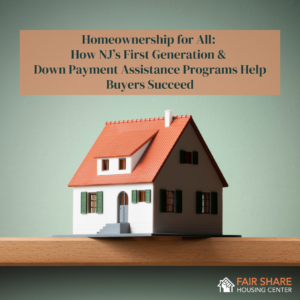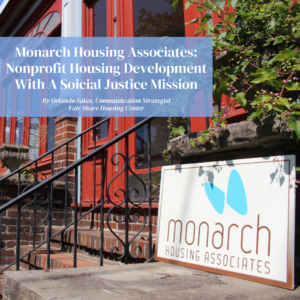September 27, 2024
By: Diego Arias (Policy Associate, Fair Share Housing Center)
With each natural disaster, the need for equitable rebuilding and enhanced resilience grows more urgent. However, current policies fall short in ensuring that low-income and communities of color can shape recovery, access necessary resources, and protect against future harm. Recovery spending disproportionately benefits wealthier, white Americans — worsening inequalities at a time when climate change is putting millions more people at risk in the coming decade.
In the wake of Hurricane Sandy, New Jersey’s inequitable response epitomized the worst of disaster recovery policy. But we fought back and won the largest fair housing settlement in U.S. history, redirecting hundreds of millions of dollars to low-income communities of color.
To commemorate the 10-year anniversary of the settlement this year, we published a report, Hurricane Sandy and New Jersey’s Fight for Equitable Disaster Relief, analyzing past and present disaster recovery challenges — and what can be done to overcome these challenges in New Jersey and beyond.
The landmark Sandy settlement arose from the state’s inability to properly handle hurricane relief efforts, then-Governor Chris Christie’s lack of leadership, and his administration’s unequal distribution of aid. From 2012 to 2014, after the storm had damaged extensive state infrastructure, Governor Christie’s use of federal disaster aid favored wealthier state residents and ignored the extensive structural, financial, and mental health challenges facing many people of color and working-class New Jerseyans.
In response, the Latino Action Network, NJ NAACP, and Fair Share Housing Center filed a fair housing complaint in 2014. As a result of our advocacy and legal efforts, the state was compelled to improve its services and ensure that historically excluded groups received necessary support. However, as noted in our report, post-settlement Sandy recovery faced continued challenges, including inadequate implementation and bureaucratic hurdles that delayed aid distribution.
The report details individual stories of survivors, such as Kisha Baldwin, who fought for her right to access rebuilding funds after her home was severely damaged. Her story underscores how minority and low-income residents disproportionately struggled with displacement, health issues, and inadequate recovery resources due to systemic neglect and racial disparities.
Janet Cruz’s story also illustrates the struggles faced by low-income and minority communities after Hurricane Sandy. Janet lived in Newark’s Ironbound neighborhood, which was severely impacted by the storm. Her home was flooded with over ten feet of water, leaving her house uninhabitable. Janet attempted to access rebuilding funds through the state’s Reconstruction, Rehabilitation, Elevation and Mitigation (RREM) Program, but was repeatedly denied. She eventually lost her home. Janet’s and Kisha’s experiences highlight the emotional and financial tolls faced by those in marginalized communities, as well as the state’s failure to provide adequate assistance.
The Sandy settlement served as a national precedent for future equitable disaster recovery initiatives, emphasizing the importance of addressing the unique needs of marginalized communities during crises. Ten years later, the need for proactive policies, improved equity standards, and a more culturally competent approach to disaster recovery is more urgent than ever.
We must all recognize the broader implications of climate change and how it exacerbates the vulnerabilities of low-income and minority communities. Without first addressing these systemic inequities, we will continue to struggle to meet the most pressing needs of New Jersey’s most vulnerable communities when natural disasters strike.
Read the report: Hurricane Sandy and New Jersey’s Fight for Equitable Disaster Relief





